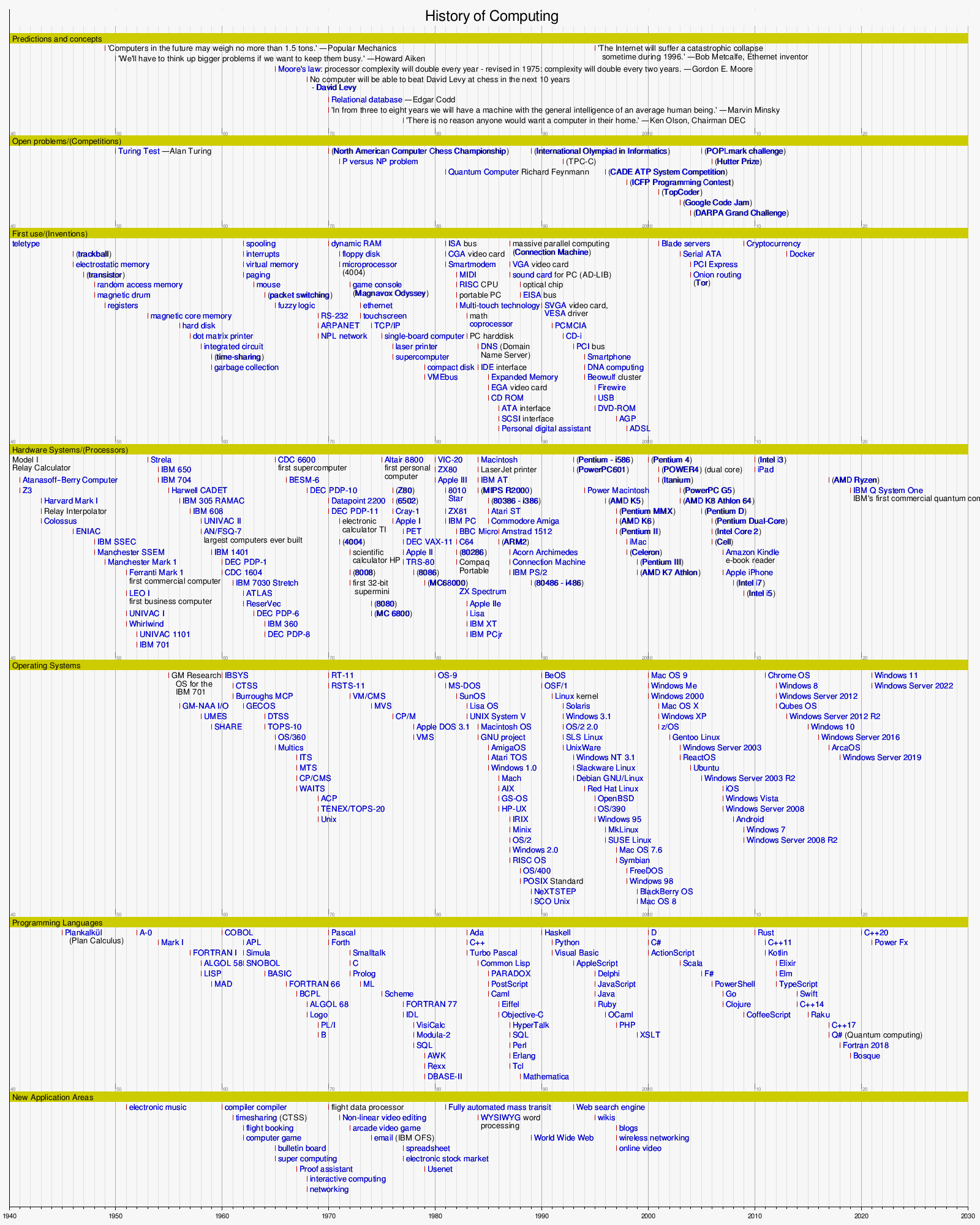Timeline of computing facts for kids
Timeline of Computing: A Journey Through Time
Welcome to the amazing story of computers! This timeline shows you how computing has changed over many years. We'll explore big ideas, first inventions, and how computers have grown from simple tools to the powerful devices we use today.
Computers are everywhere now, from your phone to video games. But how did we get here? This article will guide you through the most important moments in computing history, organized by when they happened. Get ready to discover the incredible journey of technology!
Contents
What is a Computing Timeline?
A computing timeline helps us see the history of computers in order. It shows important events like new ideas, first inventions, and the creation of different parts of computers. We also look at how computer programs and ways of using computers have changed over time.
This timeline covers six main areas:
- Predictions and Concepts: Early ideas about how machines could help us calculate.
- First Use and Inventions: When new computer parts or ways of doing things were first made.
- Hardware Systems and Processors: The physical parts of computers, like chips and circuits.
- Operating Systems: The main software that makes your computer run, like Windows or macOS.
- Programming Languages: The special codes used to tell computers what to do.
- New Application Areas: How computers started being used in different parts of our lives, like for games or the internet.
Exploring Detailed Computing Timelines
If you want to dive deeper into specific time periods, you can check out these detailed timelines:
- Before 1950: The very early days of counting and calculating.
- 1950–1979: The birth of modern computers and early programming.
- 1980–1989: The rise of personal computers.
- 1990–1999: The internet starts to become popular.
- 2000–2009: More powerful computers and mobile devices.
- 2010–2019: Smartphones and social media grow.
- 2020–present: The latest advancements in computing.
Visualizing Computer History
Sometimes, seeing a picture helps understand history better. A graphical timeline shows these events visually, making it easier to see how different parts of computing developed side-by-side.

More About Computer History
If you're curious to learn even more about how computers came to be, check out these related topics:
- History of compiler construction: How programs that translate code were made.
- History of computing hardware: The story of computer parts, from early days to the 1960s.
- History of computing hardware (1960s–present): How computer parts kept getting better after the 1960s.
- History of the graphical user interface: How computers got easy-to-use screens with icons and windows.
- History of the Internet: The journey of the global network connecting us all.
- History of the World Wide Web: How the web pages you visit every day were created.
- List of pioneers in computer science: Famous people who made big discoveries in computing.
- Timeline of electrical and electronic engineering: The history of electricity and electronics that made computers possible.
- Microprocessor chronology: The timeline of the "brains" of computers.
Online Resources for Learning More
Want to explore more about computing history? Here are some helpful websites:
- Stephen White, A Brief History of Computing
- The Computer History in Time and Space, Graphing Project, a project that tries to show computer history visually, especially for operating systems.

